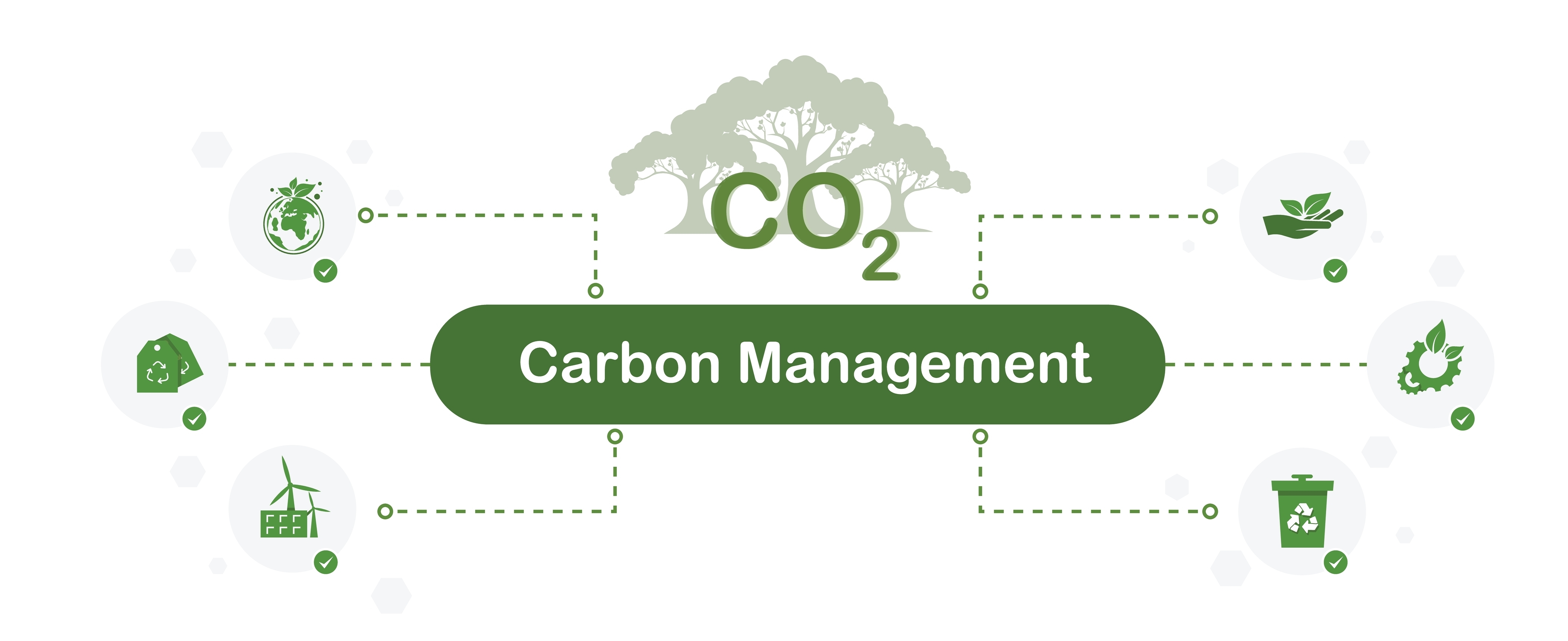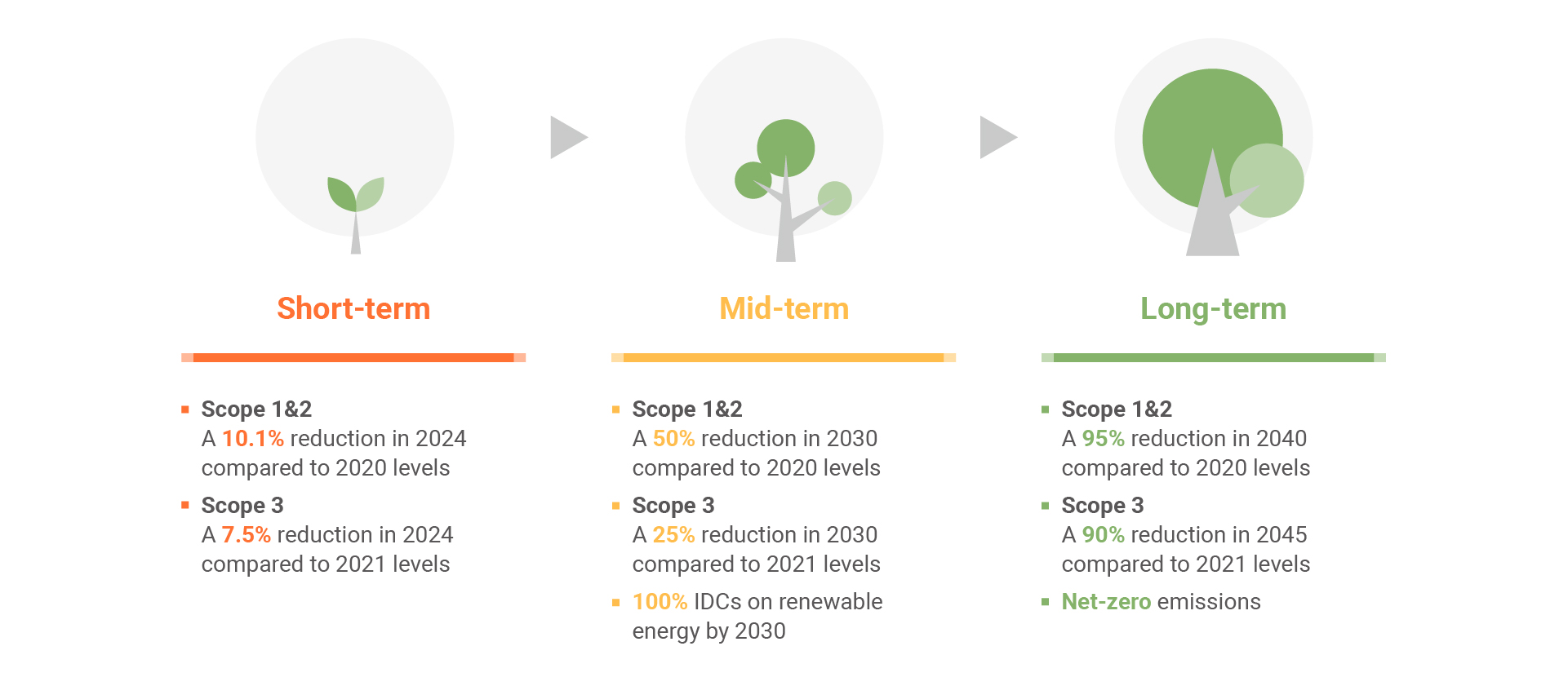Carbon Management Strategies
Chunghwa Telecom is fully aware of the double impact of climate change on the telecom industry, which presents both challenges and opportunities. To mitigate the climate-related risks and seize low-carbon business opportunities, with the internal and external carbon management strategies combined, we invest in the development of sustainable low-carbon products and services with an innovative thinking and core competencies, securing the advantages in the low-carbon and smart economy. As such, Chunghwa Telecom aims to deliver business revenue growth, decouple operations from carbon emissions, realize a sustainable low-carbon transformation, and seize green business opportunities.
- Internal: Stipulate the corporate “environmental sustainability development strategies and net-zero emissions targets”; improve the efficiencies of environmental information management in carbon emissions, resource utilization, etc. using the self-developed environmental information management system.
- External: Develop renewable energy; utilize ICT core competencies; develop “low-carbon sustainable products”; and provide professional technologies and services in energy saving and carbon reduction for enterprises.

Low-carbon Sustainable Strategies and Actions
| Action | Description |
|---|---|
| Focus on environmental sustainability issues and regulatory progresses in the world |
|
| Climate change adaptation strategies |
|
| Construction of low-carbon sustainable supply chain |
|
| Development of low-carbon sustainable products and services |
|
| Service process digitalization |
|
Carbon Management Targets
Through the Science Based Targets Initiative (SBTi), Chunghwa Telecom has lay out its short-, mid-, and long-term carbon management targets to march toward the goal of 2045 net-zero emissions.
| Strategies and Targets by 2030 | Progresses in 2024 |
|---|---|
|
Improve energy efficiency and develop renewable energy. Targets:
|
|

Documents
-
BS 8001 Conformity Statement
-
ISO 14067 Verification (MOD)
-
ISO 14067 Verification (HAMI VIDEO)
-
ISO 14067 Verification (CHT CDN)
-
ISO 14067 Verification (HiLink)
-
ISO 14067 Verification (5G Mobile Internet Service)
-
ISO 14067 Verification (HiNet)
-
ISO 14067 Verification (Fixed Voice Service)
-
ISO 14067 Verification (FTTx Service)
-
ISO 14067 Verification (one Chunghwa Telecom's direct sale coounter service-1)
-
ISO 14067 Verification (one Chunghwa Telecom's direct sale coounter service-2)


